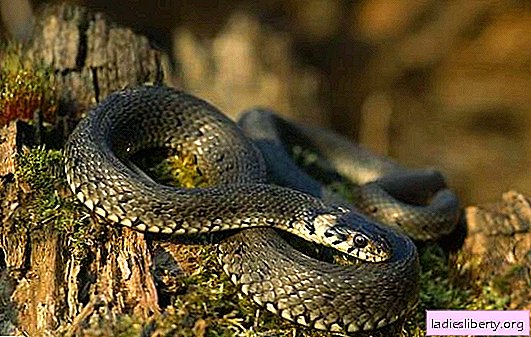
Begonia is perhaps the most common indoor flower.
The advantage of tuber begonia in long and plentiful flowering. Among the representatives of the genus there are plants with double flowers, similar to peonies, carnations or roses.
But how to properly care for tuberous begonia at home?
Planting begonia tubers
All you need to pay attention to before buying tubers is their appearance. Healthy begonia tubers should not have dents, stains, or signs of mold. To the touch they are dense, not loose. It is better to buy tubers in March when awakened kidneys are visible. Do not buy tubers with overgrown stems.

Photo of begonia tubers ready for planting
It is not difficult to grow begonia from a tuber at home, but the composition of the soil should be taken seriously. Begonia grows better in a loose substrate with low acidity. In addition, for better flowering, she needs a rather nutritious soil. This should be taken into account when preparing the soil mixture.
If the purchased soil is not suitable, then begonia will gladly grow in such a substrate:
• Sheet earth - 3 part;
• Peat - 1 part;
• Humus - 1 part;
• Sand - 1 part.
The pot is filled with soil by 2/3, since the lower part should be completely occupied by drainage. To plant a tuberous begonia, a not too close pot is chosen. The optimal size is when from the edge of the tuber to the sides of the pot 4 cm.
Adhering to the rules for planting tubers, which are presented below, to grow begonias is simple.
1. Tubers are cleaned of old roots.
2. Disinfect in a solution of potassium permanganate for about 30 minutes.
3. In the soil, make a recess, and place the tuber with the kidneys up.
4. Lightly sprinkle with a loose substrate, trying not to fall asleep kidneys.
In the future, care for tuberous begonia at home is reduced to creating comfortable conditions for germination.
The temperature is maintained at a level of 15-20 C. Since the tubers sprout for a very long time, only after two weeks the stems will grow by 5 cm. After this, the earth is added to the pot, covering the tuber completely. 2-3 stems are left in the young plant, the rest are plucked.

A young plant can be transplanted only after the bush is fully formed. At the same time, the volume of the pot is increased by 15 cm. During the transplant, the tuber can be completely immersed in the ground.
How to care for tuberous begonia
First of all, the flower pot needs to be positioned correctly. Its flowering and growth depends on this.
Lighting
Begonia loves bright light, but it must be shaded from direct sunlight. It is best to place the pot in a room close to a window or on a windowsill of oriental orientation. On the southern windows, the flower will receive leaf burns.
Begonia does not like growing conditions to change frequently, so the pot with the plant is immediately placed in a constant place. From changing the orientation of lighting leaves and buds fall.
Temperature mode
Begonia loves warmth, therefore, throughout the entire growing season, the temperature is maintained at 20-23 C.
In winter, the temperature is reduced by putting the pot in a cooler place.
Air humidity
Begonia prefers high humidity, but does not tolerate spraying. To increase the humidity around the plants, place water plates on the windowsill. It will evaporate, this will be quite enough. You can also put the pot in a pan with water and expanded clay, but make sure that its bottom does not come into contact with water, otherwise the tuber will rot.
In addition, caring for tuberous begonia at home, do not forget to ventilate the room, otherwise the plant will lose its leaves. Begonia does not tolerate stagnation of air, but drafts are contraindicated to it.
Watering and feeding
The flower does not tolerate drought and abundant watering. It is best if the land is dry enough between waterings.
Watering is carried out with settled water at room temperature, trying not to fall on the leaves. Begonia is not watered with too cold water.
For abundant flowering, begonias are regularly fed with complex fertilizer for flowering indoor plants. During the growing season, top dressing is carried out 2 times a month.
Winter tuber begonia care at home
Begonia blooms for a long time, from early spring to late autumn. Bright flowers regularly appear on the shoots. With the advent of autumn, the plant prepares for a dormant period, flowering stops. What to do with begonia during this period?
First of all, stop feeding, and reduce the watering regime. The plant gradually drops its leaves, and its aerial part fades. After that, you can dig up the tuber for storage.
Before laying for storage, the tubers are washed in a potassium permanganate solution and dried in a ventilated room. Store planting material in a cool place on the bottom shelf of the refrigerator or in the cottage basement. Before storage, the tubers are placed in a box or bag with holes, sprinkled with sawdust. From time to time, the sawdust is moistened with water so that the begonia tubers do not dry.
How to propagate begonia at home
Begonia is propagated by seeds, cuttings or division of the tuber.
Seed propagation is a very troublesome task, so they rarely resort to it. For example, if a variety you like is difficult to get in your area.
Cutting begonias is the most optimal breeding option. In the spring, begonia shoots are cut into cuttings and rooted in a moist substrate. To speed up the process, a greenhouse is built over the cuttings. This will help to maintain the required humidity, but remember that the greenhouse must be ventilated. Rooting can be considered successful if leaflets appear on the apical shoots. Once the cuttings are strong, they are transplanted into a permanent pot for growing.

By dividing tubers, only an adult plant propagates, whose age is more than 2 years. In the spring before planting, its tuber is divided into several parts, so that each has developed buds. The place of slices must be sprinkled with crushed charcoal so that rot does not form. Further, begonia is looked after as usual.

Difficulties in growing tuber begonia
Often, beginners in indoor floriculture fail to grow lossless begonias. Often a plant does not bloom at all, discards leaves or fades. What is the reason?
1. Begonia does not bloom, because the conditions of detention are violated. Flowering is strongly influenced by air humidity, watering regime and plant location.
2. The flower withers, because the pot is located in a sunny place, the soil is too wet or the water got on the leaves during watering.
3. The plant discards leaves due to improper care. If begonia is grown without a dormant period, then the flower will look dull, discard the leaves.
As you can see, growing tuberous begonia is not difficult, but you still need to make an effort.











